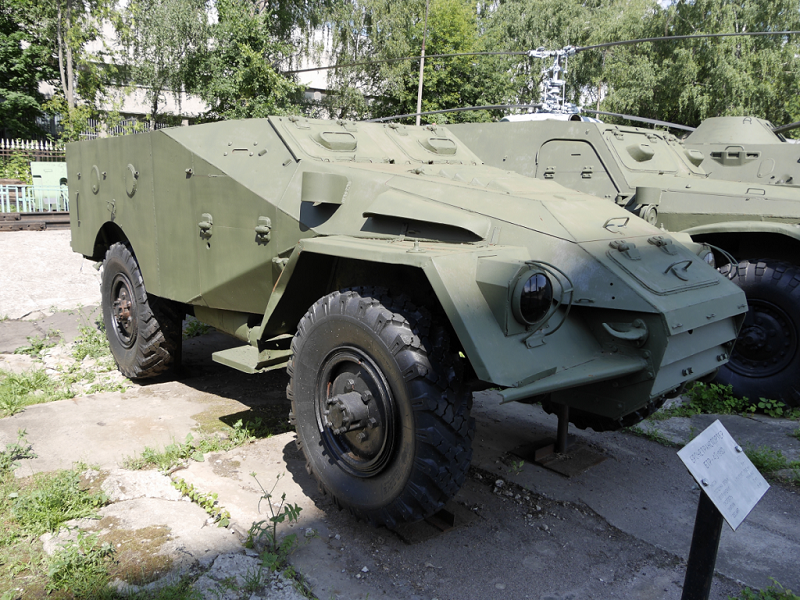An armored personnel carrier BTR-40 of the 1950 model. Armor – 8 mm. The speed – 78 km / h. Crew – 2 people. Landing troops – 8 people.
Museum of the Soviet Army, Moscow
The BTR-40 (БТР, from Бронетранспортёр, or Bronetransporter, literally “armoured transporter”.†) is a Soviet non-amphibious, wheeled armoured personnel carrier and reconnaissance vehicle.
It is often referred to as the Sorokovka in Soviet service. It is also the first mass-produced Soviet APC. It was eventually replaced in the APC role by the BTR-152 and in the scout car role by the BRDM-1.
The BTR-40’s development began in early 1947 at the design bureau of the Gorkovsky Avtomobilny Zavod (Gorkovsky Automobile Factory) under the leadership of V. A. Dedkov. The concept was a successor to the BA-64B armoured car which went out of production in 1946. The design team also included L. W. Kostikin and P.I. Muziukin. Two prototypes designated BTR-141 were completed in 1947.
The first was armed with two coaxial 14.5 mm KPVT heavy machine guns on a rotatable mount which was protected by armour plate at the front and sides. The second had no fixed armament. Neither one was accepted for service. In 1950 two new prototypes were produced. Those had a different shape of armour including an upright rear armour. Again one prototype had no fixed armament and the second was armed with two coaxial 14.5 mm KPVT heavy machine guns. These were accepted into service as BTR-40 and BTR-40A respectively.











